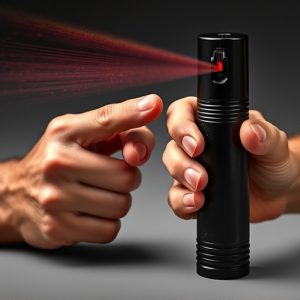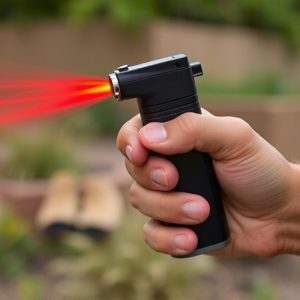Pepper Spray Exposure: Care, Safety, and Treatment Strategies
TL;DR:Understanding capsaicin, the active ingredient in pepper spray, is crucial for effective expos…….
TL;DR:
Understanding capsaicin, the active ingredient in pepper spray, is crucial for effective exposure treatment. In case of capsaicin-based spray contact, immediately rinse affected areas with water for 15 minutes or more, remove contaminated clothing, and seek fresh air. For severe reactions or persistent symptoms, medical attention is advised. Preventative measures include proper training on handling techniques, wearing protective gear, and maintaining spray devices. Strategically placed decontamination stations with eye washing facilities aid swift response in public areas where these sprays are used.
“Discover the power of capsaicin, the active ingredient behind pepper spray, and its surprising role in crowd control. This article explores innovative uses of this compound as a non-lethal tool for maintaining public safety. We delve into the science behind capsaicin’s inflammatory effects and its impact on managing chaotic situations.
Furthermore, learn practical strategies for treating exposure, from immediate care to long-term prevention, ensuring you’re equipped with essential knowledge on how to manage pepper spray incidents effectively. Stay informed and be prepared.”
- Understanding Capsaicin: The Active Ingredient in Pepper Spray
- Treating Exposure: Immediate and Long-Term Care Strategies
- Safety Measures: Prevention and Response for Pepper Spray Incidents
Understanding Capsaicin: The Active Ingredient in Pepper Spray
Capsaicin, the active ingredient in pepper spray, is a natural compound derived from chili peppers. It’s what gives these peppers their heat and spicy sensation. When used in crowd control sprays, capsaicin irritates the eyes, nose, and respiratory system, causing temporary disorientation and pain. This effect can help to disrupt and disperse crowds quickly and safely.
Knowing how to treat pepper spray exposure is crucial. If exposed, immediately wash affected areas with plenty of water. Remove clothing that has come into contact with the spray. Seek fresh air and cool water if you’re experiencing difficulty breathing or eye irritation. Medical attention may be necessary for severe reactions, but most cases of pepper spray exposure can be managed at home through basic first aid measures.
Treating Exposure: Immediate and Long-Term Care Strategies
In the event of exposure to capsaicin-based inflammatory crowd control spray, immediate and proper care is crucial to mitigate discomfort and potential long-term effects. The first step is to immediately remove any contaminated clothing or footwear, as these can continue to release irritants. Rinse affected areas with plenty of water for at least 15 minutes, focusing on the eyes, skin, and respiratory tract. This helps flush out the capsaicin, alleviating immediate pain and irritation.
For long-term care, it’s important to seek medical attention if symptoms persist or worsen. A healthcare provider may recommend topical creams or oral medications to reduce inflammation and manage pain. Additionally, they might suggest humidifiers to ease respiratory discomfort and steam showers to help clear nasal passages. Individuals should also avoid irritants and allergens for a few days to prevent further irritation. How to treat pepper spray exposure effectively involves a combination of quick thinking, proper rinsing, and medical care when needed, ensuring faster recovery and reduced risk of complications.
Safety Measures: Prevention and Response for Pepper Spray Incidents
Safety Measures: Prevention and Response for Pepper Spray Incidents
When using a capsaicin-based inflammatory crowd control spray, safety measures are paramount to prevent and manage potential incidents. To avoid exposure, users should wear protective gear including gloves, goggles, and clothing that covers exposed skin. Training on proper handling and application is crucial, emphasizing techniques to minimize over-spray and direct contact with individuals not targeted. Regular maintenance and inspection of the spray devices are essential to ensure their functionality and safety.
In case of accidental exposure, quick response is vital. If pepper spray comes into contact with the eyes, immediately flush them with clean water for at least 15 minutes. For skin contact, remove contaminated clothing and wash the affected area with soap and water. Breathing difficulties can be alleviated by moving to an area with fresh air. Seek medical attention if symptoms persist or severe reactions occur. Proper decontamination stations equipped with eye washing facilities and cleaning supplies should be strategically placed in public areas where these sprays are deployed to facilitate immediate response.
Pepper spray, with its active ingredient capsaicin, is a powerful tool for crowd control but requires careful handling. Understanding how to treat pepper spray exposure is crucial, as immediate and proper care can significantly reduce discomfort and prevent complications. By following safety measures and knowing the best strategies for both short-term relief and long-term healing, folks can navigate incidents effectively. Remember that, in terms of How to Treat Pepper Spray Exposure, it’s essential to stay informed and prepared, ensuring a swift and safe response.


